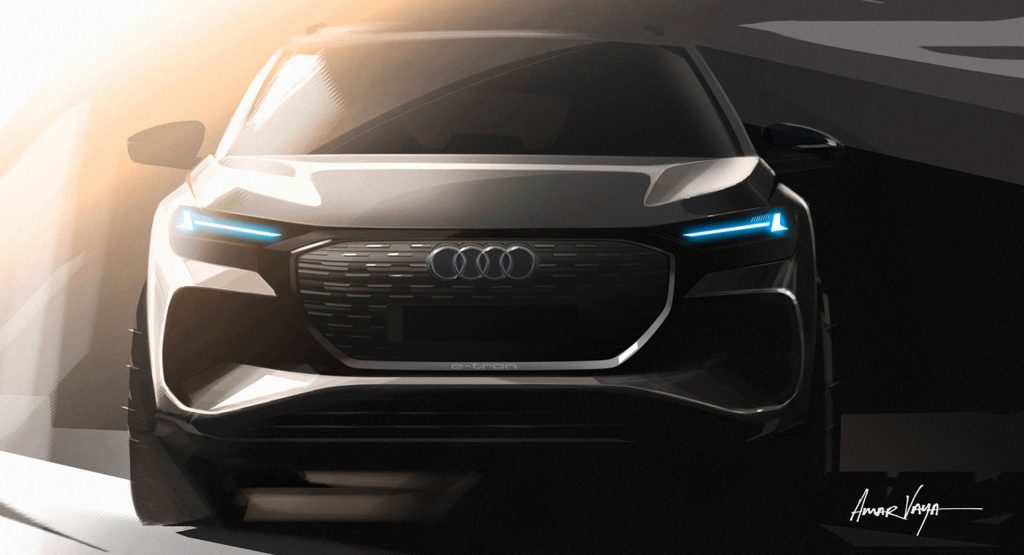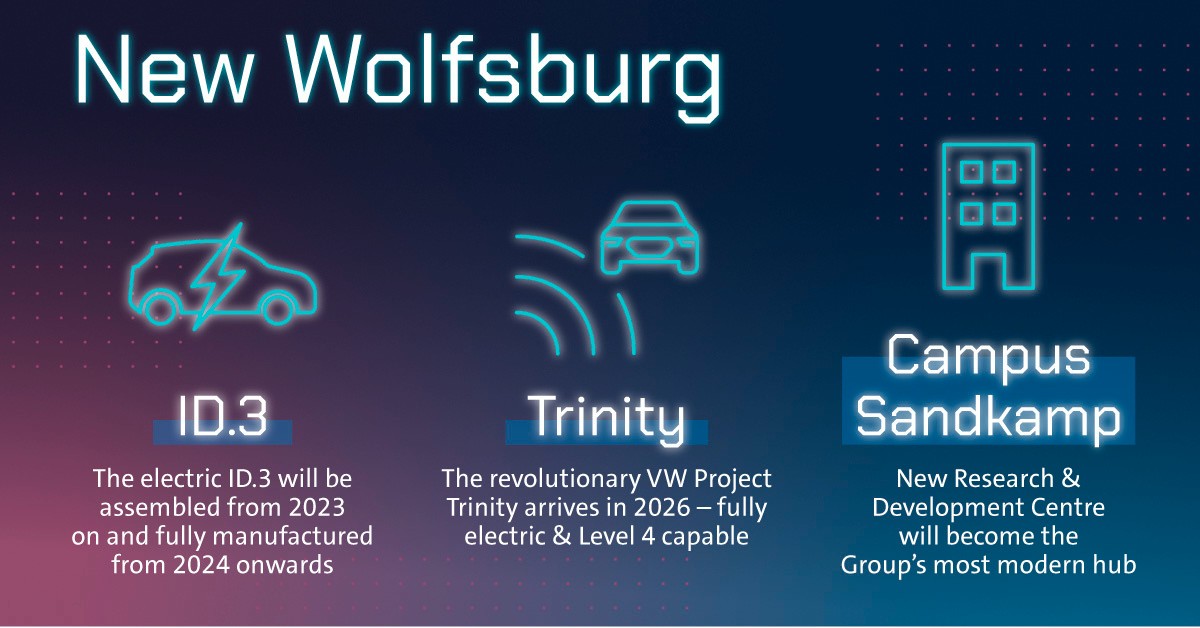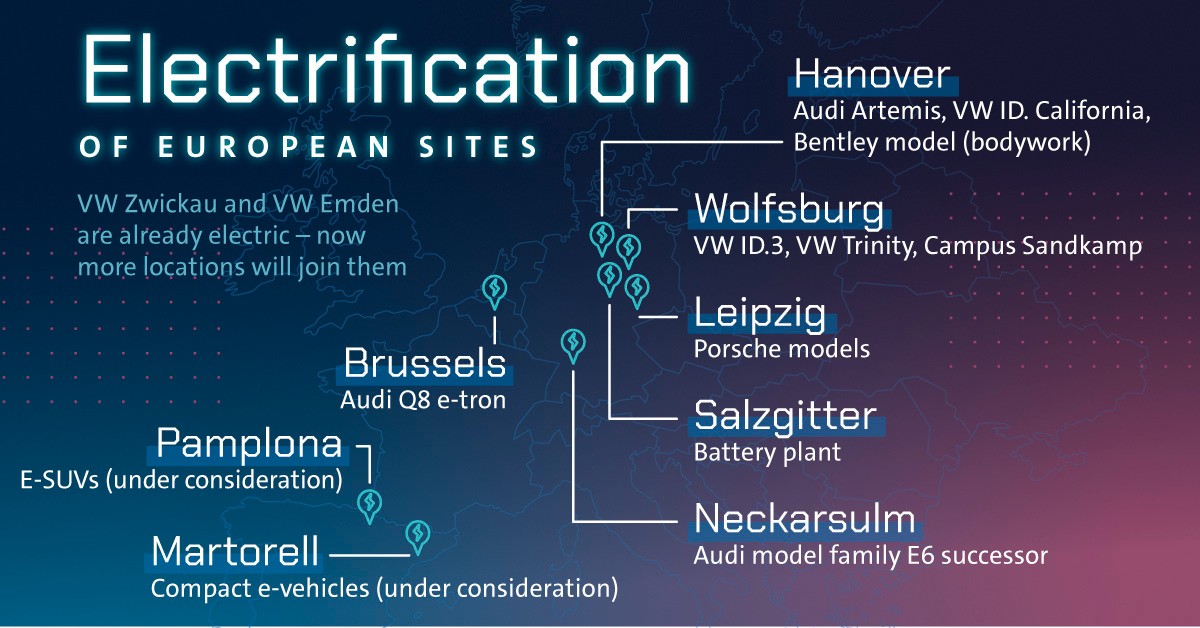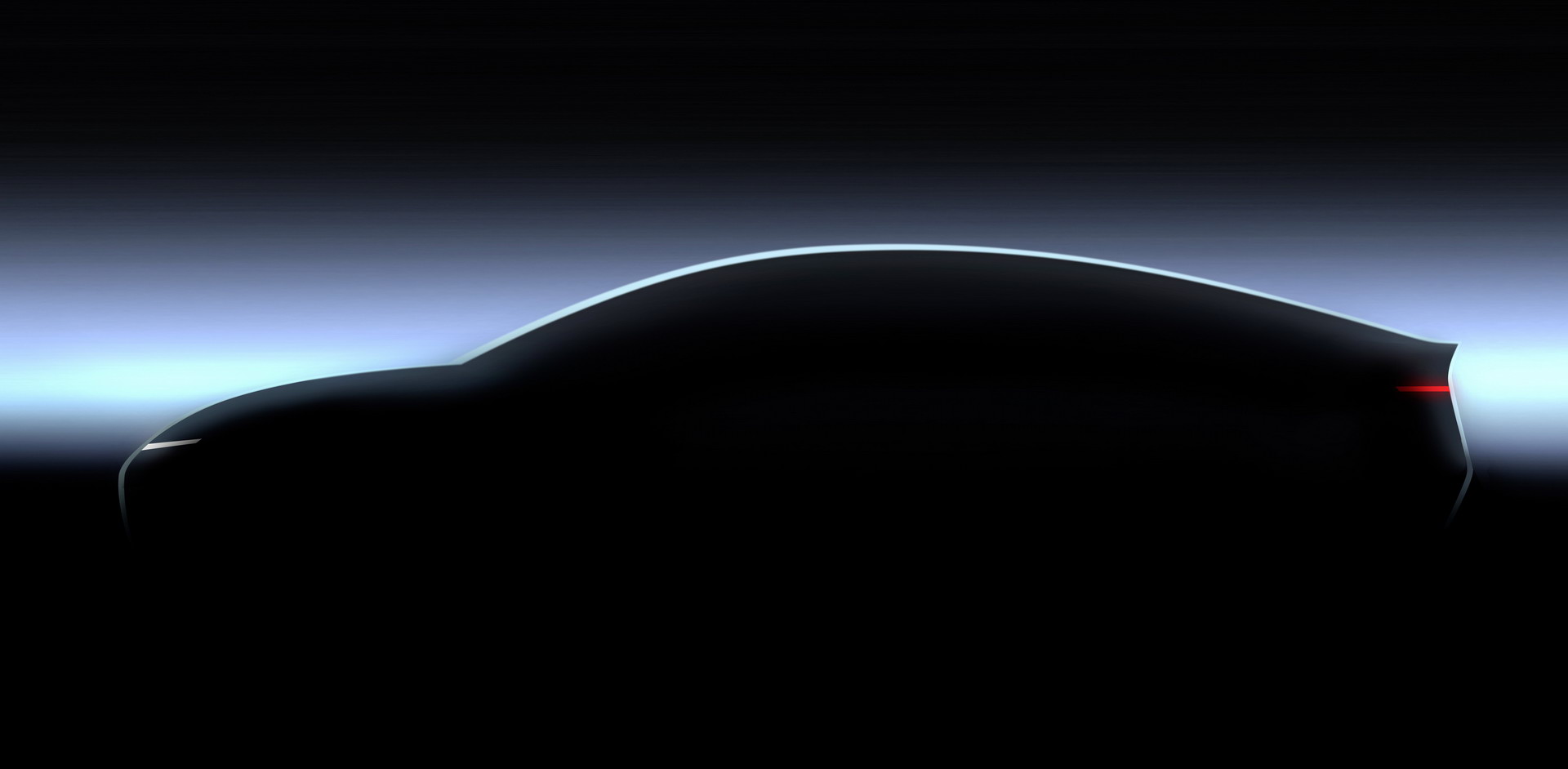Volkswagen has announced plans to invest a staggering €89 ($100 / £76) billion into e-mobility and digitalization.
€21 ($23.7 / £18) billion will be invested at plants in Lower Saxony and the company’s Hanover facility will go all-electric in the “medium term.” The plant will build an assortment of different models including the first Artemis vehicle, the ID. California, the ID. Buzz AD, and MOIA shuttles. The plant will also be tasked with manufacturing bodies for a new Bentley.
Volkswagen’s Wolfsburg plant will be responsible for “full production of the ID.3 from 2024.” The facility will also build Project Trinity, starting in 2026. It’s billed as a competitive next-generation battery electric vehicle with Level 4 semi-autonomous driving technology.
Also Read: VW Confirms Electric ID. California Campervan Based On The ID. Buzz
Elsewhere, the Leipzig plant will build two new Porsches based on the PPE architecture. The company didn’t say much about them, but one of the models is the next-generation Macan.
Over at Audi, the Neckarsulm plant will build the new “E6 model family.” Likewise, the Brussels plant will begin making the Q8 e-tron in 2026.
If that wasn’t enough EVs, Volkswagen revealed plans to build compact electric vehicles in Martorell and electric crossovers in Pamplona starting in 2025. Both of the plants would make vehicles for multiple brands, but plans haven’t been finalized as the “final decision depends on the general conditions and government incentives.”
Volkswagen CEO Herbert Diess stated, “In the NEW AUTO world, our business model is undergoing radical change – Volkswagen is being transformed from a traditional automotive manufacturer to a vertically integrated Group with strong brand groups and world-leading technology platforms.” He added, “Wolfsburg, our Group’s long-established headquarters, will be central to the transformation, because we can only safeguard our strong position long term if Wolfsburg is successful.”
Volkswagen also said they expect 25% of sales to come from electric vehicles by 2026. That number should increase in the following years as even more electric vehicles are introduced.







